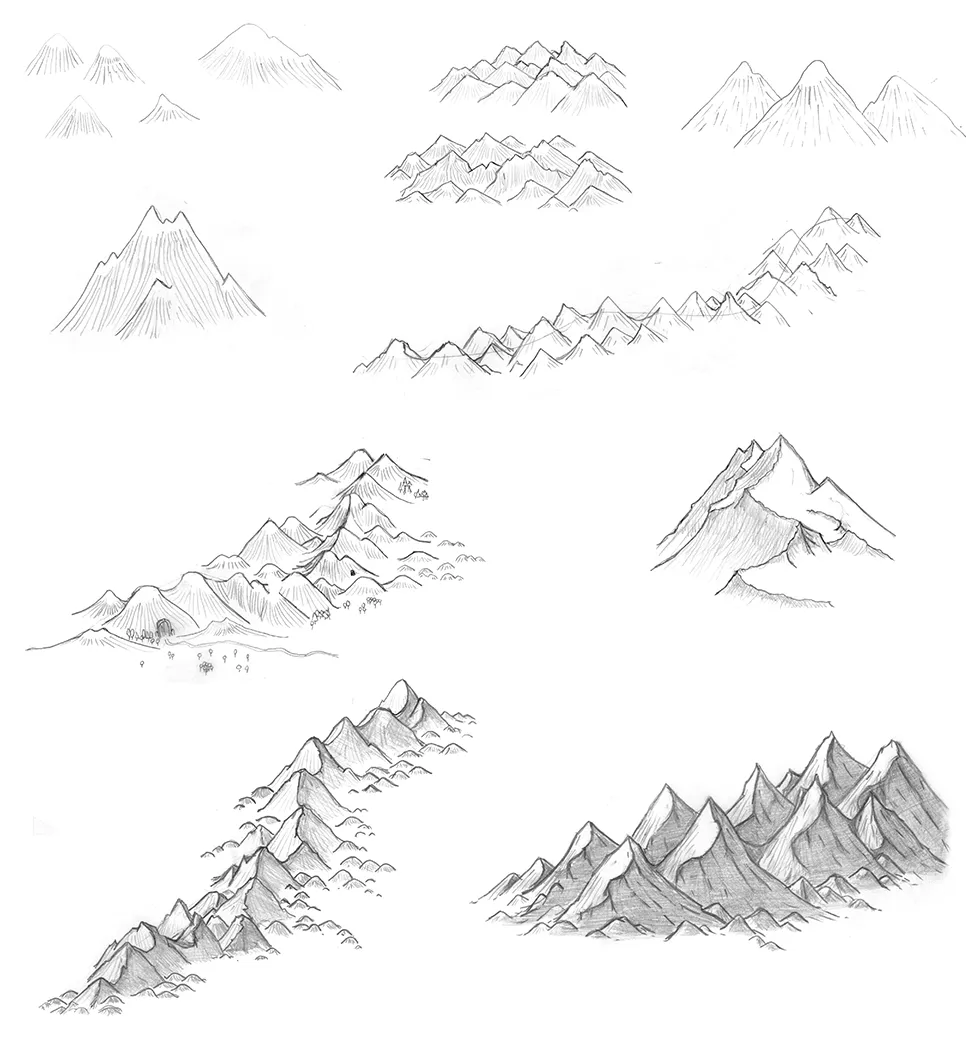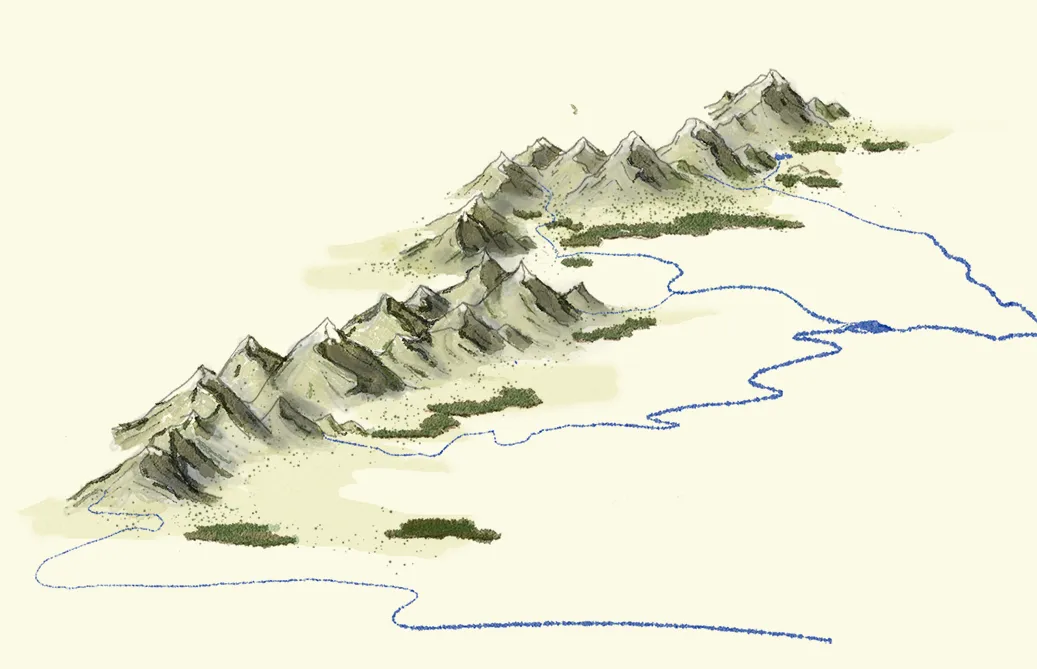Hacía mucho tiempo que no publicaba. Otros proyectos en los que trabajo reclamaban mi atención, y también quería emperzar con otros nuevos, como es el caso de la cartografía artística.
Recuerdo que, desde pequeño, siempre me llamaba todo el mundo de los mapas hechos a mano. Que, por otra parte, están tan ligados a los juegos de los niños. Esos mapas del tesoro de los piratas, con montañitas y bosques dibujados, y una gran cruz bien marcada. O aquellos que aparecían en las películas de aventuras o en los cómics de Astérix y Tintín. El caso es que esa atracción se acrecentó cuando descubrí la literatura de fantasía épica o de espada y brujería. Lo hice, precisamente, de la mano de Tolkien y El Señor de los Anillos. Y allí estaba, precediendo la novela, el clásico mapa en tinta negra. El mapa que se convertiría en el modelo que seguirían todos los que vinieron detrás.
Yo tampoco tardé mucho en imitarlo. En mi caso porque, además de seguir encontrando ese tipo de mapas en mis lecturas de género, comencé a jugar a rol. Y ahí es todavía más básico, no solo para conocer el mundo o la región donde tiene lugar la aventura, sino como objeto de los personajes propio juego. No sabía en aquel entonces que crear mi propio mundo era eso del worldbuilding: inventar idiomas, razas, historia y, por supuesto, la geografía, Pero ahí estaba yo, dibujando mis mapas sobre el papel, sin más pretensión que tener un setting propio en el que jugar.
It had been a long time since I had published. Other projects I was working on were demanding my attention, and I also wanted to start with new ones, such as artistic cartography.
I remember that, since I was a child, I was always attracted to the whole world of handmade maps. Which, on the other hand, are so closely linked to children's games. Those pirate treasure maps, with mountains and forests drawn, and a big cross well marked. Or those that appeared in adventure movies or in the comics of Asterix and Tintin. The fact is that this attraction grew when I discovered epic fantasy or sword and sorcery literature. I did it, precisely, by the hand of Tolkien and The Lord of the Rings. And there it was, preceding the novel, the classic map in black ink. The map that would become the model to be followed by all those who came after.
It didn't take me long to imitate it myself. In my case because, in addition to keep finding those maps in my genre readings, I started playing role-playing games. And, there, maps are even more basic, not only to know the world or the region where the adventure takes place, but as an element of the characters themselves in the game. At that time I didn't know that creating my own world was what is meant by worldbuilding: inventing languages, races, history and, of course, geography. But there I was, drawing my maps on paper, with no other pretension than to have my own scenario to play with.

El caso es que llevaba ya varios años con el gusanillo de tomarme más en serio la cartografía artística. Comencé recopilando material y tutoriales, y he terminado comprando libros e incluso software especializado. Pero aún no había sacado tiempo para ponerme practicar. Al menos hasta ahora. Así que hoy comparto el fruto de mis primeros ejercicios y prácticas. Como he dicho, hay programas especializados que automatiza el dibujo de las montañas, bosque y demás símbolos, pero yo quiero manejarme también con el dibujo a mano.
He comenzado con las montañas, cordilleras y colinas. Quiero aprender a manejar bien estos entornos. Empecé dibujando a lapicero, con un lápiz duro 2H para las guías y líneas auxiliares, un HB normal para los trazos de las formas de las montañas y las líneas de sombreado, y uno lápiz más blando, 2B, para repasar los perfiles más destacados en las cordilleras.
También comparto mi primer intento de dibujo digital, en el que he empleado el programa Clip Studio Paint. No he quedado descontento con el resultado. Al hacer algunas pruebas, descubrí el buen resultado que daban algunos pinceles de tipo spray a la hora de crear bosques. Me lo apuntaré para el futuro.
The thing is that for several years I've had the bug to take artistic cartography more seriously. I started collecting material and tutorials, and I ended up buying books and even specialized software. But I still hadn't found the time to practice. At least until now. So today I share the fruit of my first exercises and practices. As I said, there are specialized programs that automate the drawing of mountains, forest and other symbols, but I want to manage also with hand drawing.
I have started with mountains, ridges and hills. I want to learn how to handle these environments well. I started drawing in pencil, with a hard 2H pencil for the guides and auxiliary lines, a normal HB for the outlines of the mountain shapes and shading lines, and a softer 2B pencil to go over the most prominent profiles in the mountain ranges.
I also share my first attempt at digital drawing, in which I used Clip Studio Paint. I was not dissatisfied with the result. While doing some tests, I discovered how good some spray brushes were for creating forests. I will keep this in mind for the future.

Bueno, esto es solo el inicio. Espero seguir aprendiendo y mejorando. Seguiré compartiendo mis resultados con vosotros.
¡Un saludo!
Javier G. Alcaraván (@iaberius)